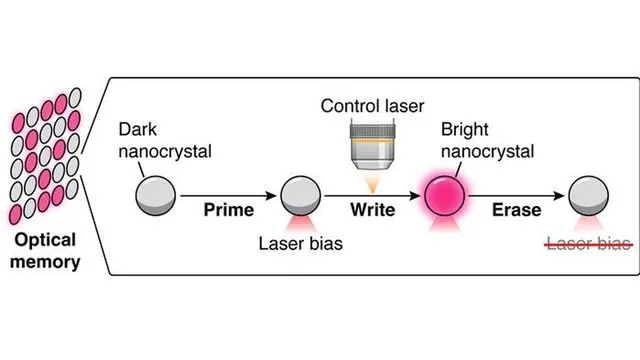
Breakthrough in Optical Computing: Bistable Nanocrystals Could Revolutionize Data Processing!
2025-01-06
Author: Yu
In a groundbreaking discovery that may reshape the future of computing, a team of researchers, including Artiom Skripka from Oregon State University, have unveiled luminescent nanocrystals capable of rapidly switching between light and dark states. This exciting advancement positions us closer to the era of next-generation optical computing and memory, which uses light particles to process and store information significantly faster than traditional methods.
“The remarkable switching and memory abilities of these nanocrystals could become fundamental to optical computing - a transformative approach for processing information at lightning speed,” said Skripka. “Our research could propel advancements in artificial intelligence and a variety of technologies.” Published in the prestigious journal Nature Photonics, this study represents a collaborative effort between researchers from OSU, Lawrence Berkeley National Laboratory, Columbia University, and the Autonomous University of Madrid.
At the heart of this discovery lies a type of material known as avalanching nanoparticles. These ultra-tiny nanomaterials, measured in billionths of a meter, exhibit unique properties that allow them to emit light with extreme intensity based on minimal changes in laser excitation. The scientists focused their study on potassium lead chloride nanocrystals doped with neodymium, which under special conditions display an intriguing phenomenon known as intrinsic optical bistability.
Typically, luminescent materials emit light only when excited by a laser. However, the new nanocrystals can toggle between emitting and not emitting light under the same laser conditions. “It’s complex but fascinating,” explained Skripka. “If the crystals start out dark, they require more power to turn on. But once activated, they can continue to emit light with significantly less power, a bit like riding a bike - once you're going, it takes less effort to keep moving.” This instantaneous on-and-off capability mimics a button push, significantly enhancing their practical utility.
These low-power switching characteristics are perfectly aligned with global efforts to streamline energy consumption in the face of burgeoning demands from artificial intelligence, data centers, and high-tech electronic devices. Current AI technologies often struggle with the limitations imposed by existing hardware capabilities; however, the breakthrough in nanocrystal technology could provide the much-needed boost.
“Incorporating these photonic materials with intrinsic optical bistability could lead to faster and more energy-efficient data processors," Skripka noted. "This innovation could enhance machine learning algorithms, data analysis, and improve devices across telecommunications, medical imaging, environmental sensing, and quantum computing.”
Moreover, the implications for future optical computers are profound. This research complements ongoing initiatives focused on harnessing the behavior of light and matter at the nanoscale, emphasizing the essential role of fundamental scientific exploration in fostering technological innovation and economic growth.
Skripka cautions, however, that while the findings are exciting, further research is imperative to overcome challenges related to scalability and integration with existing technologies before practical applications can be realized. “We’re on the cusp of something transformative, but there’s still more work to be done,” he added.
As we look to the future, the potential impact of bistable nanocrystals could be nothing short of revolutionary, paving the way for a new age of computing that harnesses the incredible power of light.
Stay tuned for more developments in this thrilling field!

 Brasil (PT)
Brasil (PT)
 Canada (EN)
Canada (EN)
 Chile (ES)
Chile (ES)
 Česko (CS)
Česko (CS)
 대한민국 (KO)
대한민국 (KO)
 España (ES)
España (ES)
 France (FR)
France (FR)
 Hong Kong (EN)
Hong Kong (EN)
 Italia (IT)
Italia (IT)
 日本 (JA)
日本 (JA)
 Magyarország (HU)
Magyarország (HU)
 Norge (NO)
Norge (NO)
 Polska (PL)
Polska (PL)
 Schweiz (DE)
Schweiz (DE)
 Singapore (EN)
Singapore (EN)
 Sverige (SV)
Sverige (SV)
 Suomi (FI)
Suomi (FI)
 Türkiye (TR)
Türkiye (TR)
 الإمارات العربية المتحدة (AR)
الإمارات العربية المتحدة (AR)